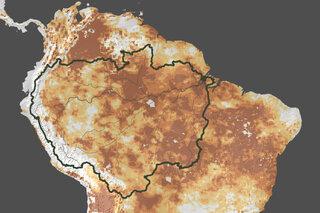A La Niña Watch has been issued by NOAA's Climate Prediction Center. But also, we are still in El Niño! Confused? Let the ENSO bloggers explain.
Last year's marine heat wave and coral bleaching was so unprecedented, NOAA had to add new risk levels to this satellite-based monitoring scale.
The researchers are not just contributing to research, they are connecting and building scientific communities focused on improving our understanding of Arctic marine ecosystems.
Researchers have found that late-20th-century hurricane frequency aligns statistically with patterns seen over the past thousand years, challenging common assumptions about recent trends.
A new study finds that most of New York City's organic pollutants come from secondary sources; they are created through chemical transformations in the atmosphere rather than emitted directly from a source.
Sustainable tourism focuses on minimizing the negative impacts of tourism for the benefit of future generations. Regenerative tourism seeks to leave the destination better than it was while improving the quality of life of the local community.
A new study estimates the Atlantic Meridional Overturning Circulation (AMOC) and heat transport at 22.5°S in the South Atlantic, demonstrating the importance of sustained in situ observations to monitor the state of the AMOC.
January brought the country both warm and cold extremes; which is likely to dominate in February?
Observations and measurements collected by the ocean robot can detect sudden changes in ocean conditions not captured by satellites and boost forecast accuracy with improved data.
